(privat)
Note: This project is in an ongoing process.
Nothingness is a term that Ylva Carlgren works with in her artwork, as understood from her essay in Ark Journal vol XII. And it is a frame of thought that I to some extend could agree with; specifically emphasizing that it is of a double nature; both form and formlessness.
I would definitely agree to that things can only exist in spaces with the opposite.
No nothingness without something.
No something without nothingness.
No void without mass.
No mass without void.
All perceptions of things and elements would be recorded or experienced through these optics. Everything, in order to exist, requires an opposite - an object would then be the defining beginning of a space. So, as to say; if there is only nothing, then it is just that. Nothing. If we were to put something (an element) into the nothingness, then maybe we all of sudden can call it a space. We sense that there’s something in that space with us, something that can be called material, something that we can interact with, something that defines points or objects in space. This would introduce a sense of scale and introduce mass to the void. Oppositions.
In comes the materiality; the manifestation of all the theory and a material that makes all the difference; the thick, offwhite and dense paper, the applied layer of pitch-black coal, that doesn’t get sucked into the surface of the paper, and thereby sort of stays in the space of the viewer - it participates in the space, it goes in dialogue with the space, it uses the paper to emerge in a very specific way, into the space. This interdependence is vital not only to the creational process of the artworks, but also to the narative, the general understanding of the construction of the artworks.
No paper without coal.
No coal without paper.
No void without coal.
No coal without void.
Then there’s also the beautiful simplicity of it. The theoretical framework might be complicated and difficult to explain, yet the artworks themselves would argueably be as simple as it gets. It incorporates an array of things, though; the human scale is visible throughout everything that has to do with pieces within the space. It is clearly visible to the viewer that the process of its creation lies within the hands and mind of a human, as seeing the drawings from certain angles reveals something about the human body, something about the way the artwork came into being,
This might also be where the possibility of working with terms that usually only is applicable to the world of physically present materials in a given space grows.
Concepts, such as weight, tactility, material properties and quality is closer within the human frame of reference. And perhaps, more specifically when working with a medium, such as black on paper, that to the human mind comes closer to something physically present, rather than, say yellow or red or green.
Below is a few select pages from the publication:

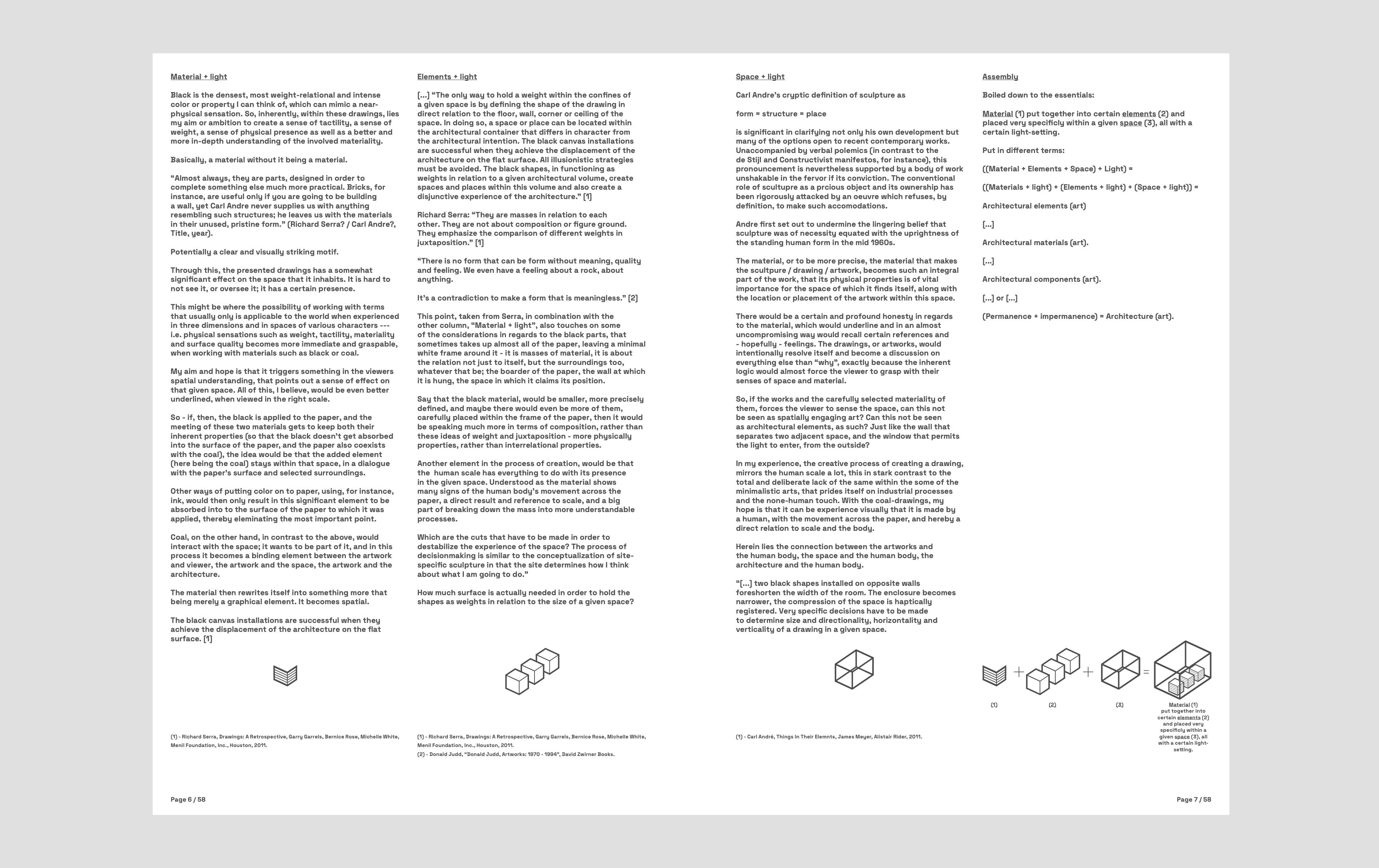
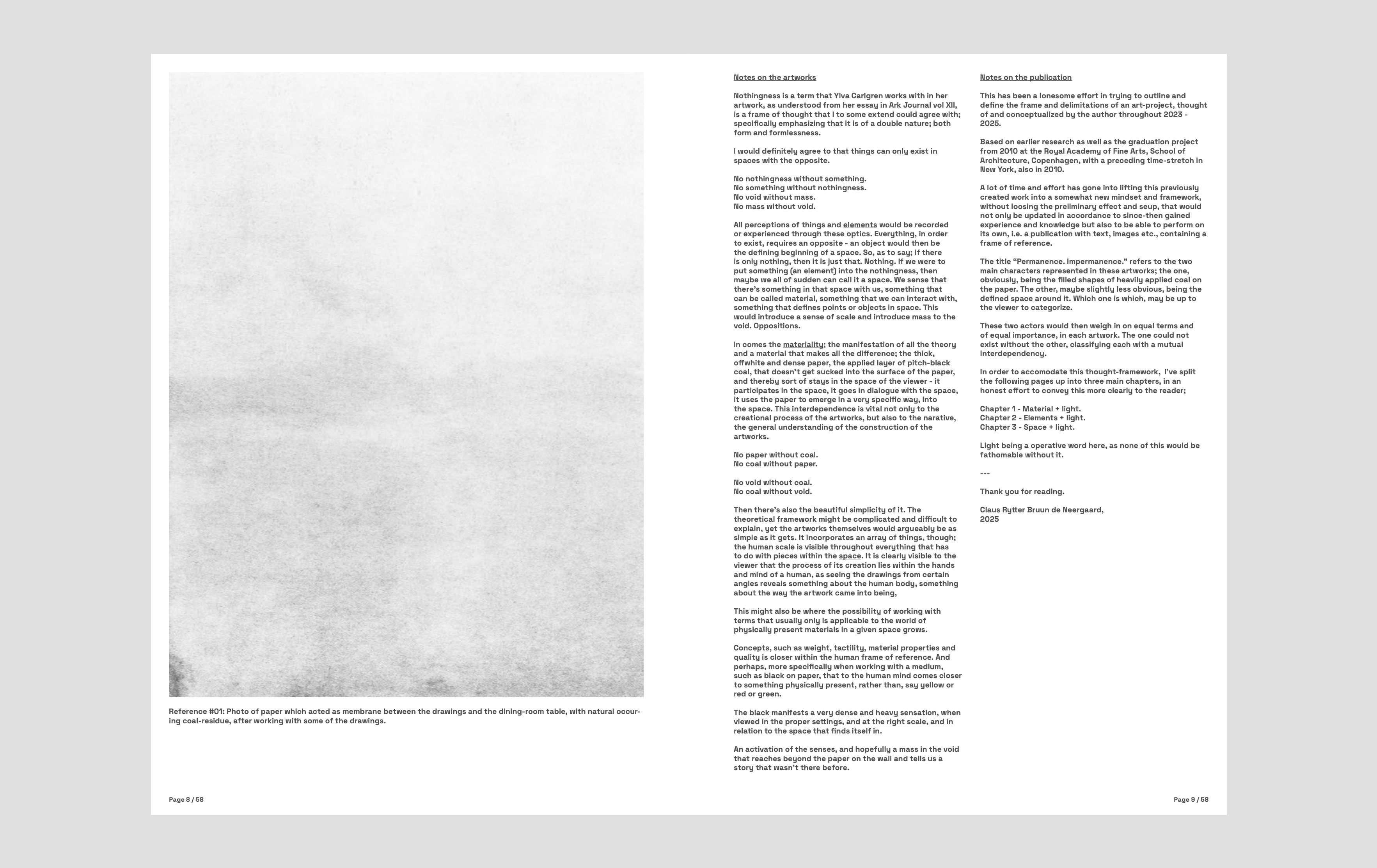
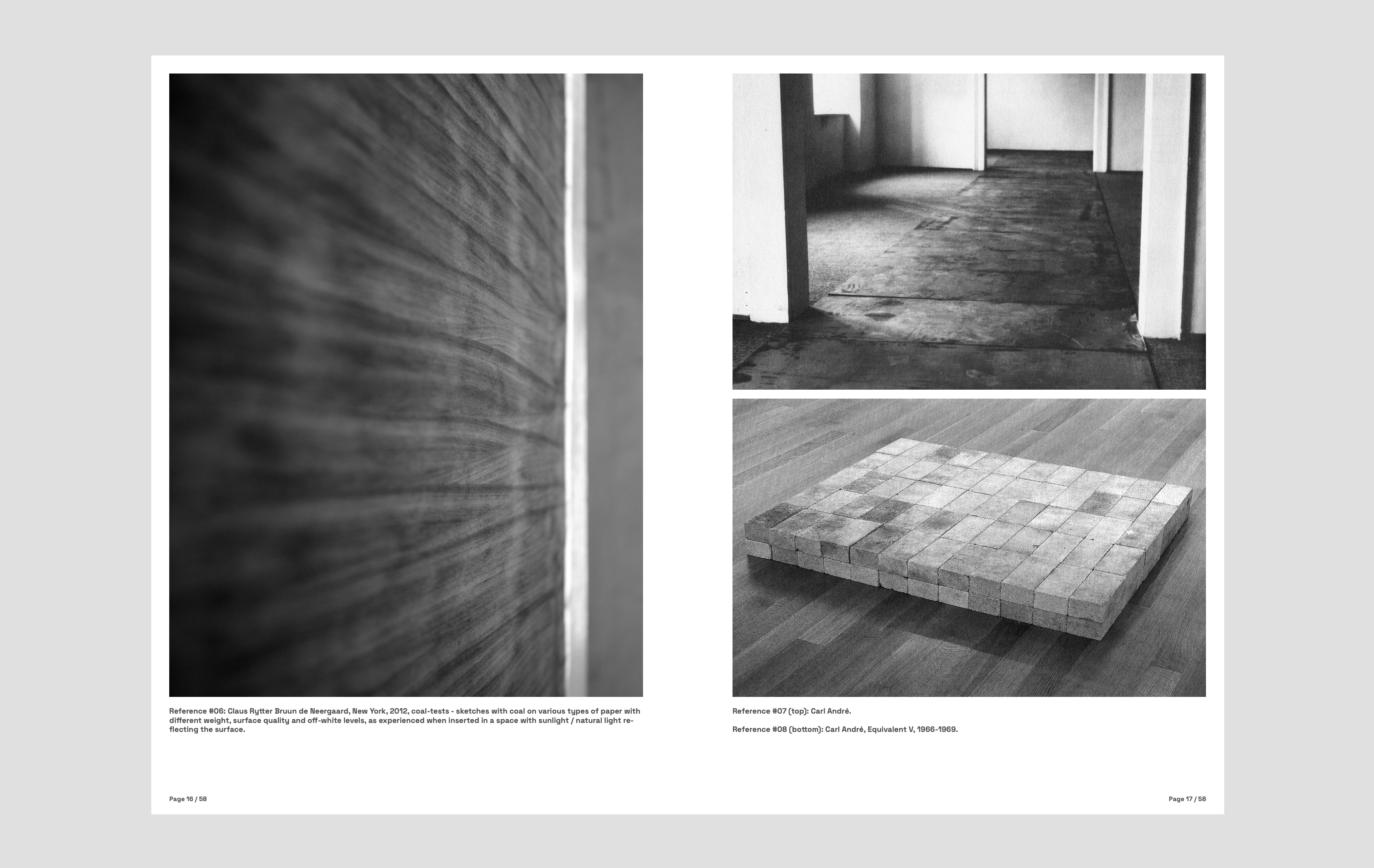
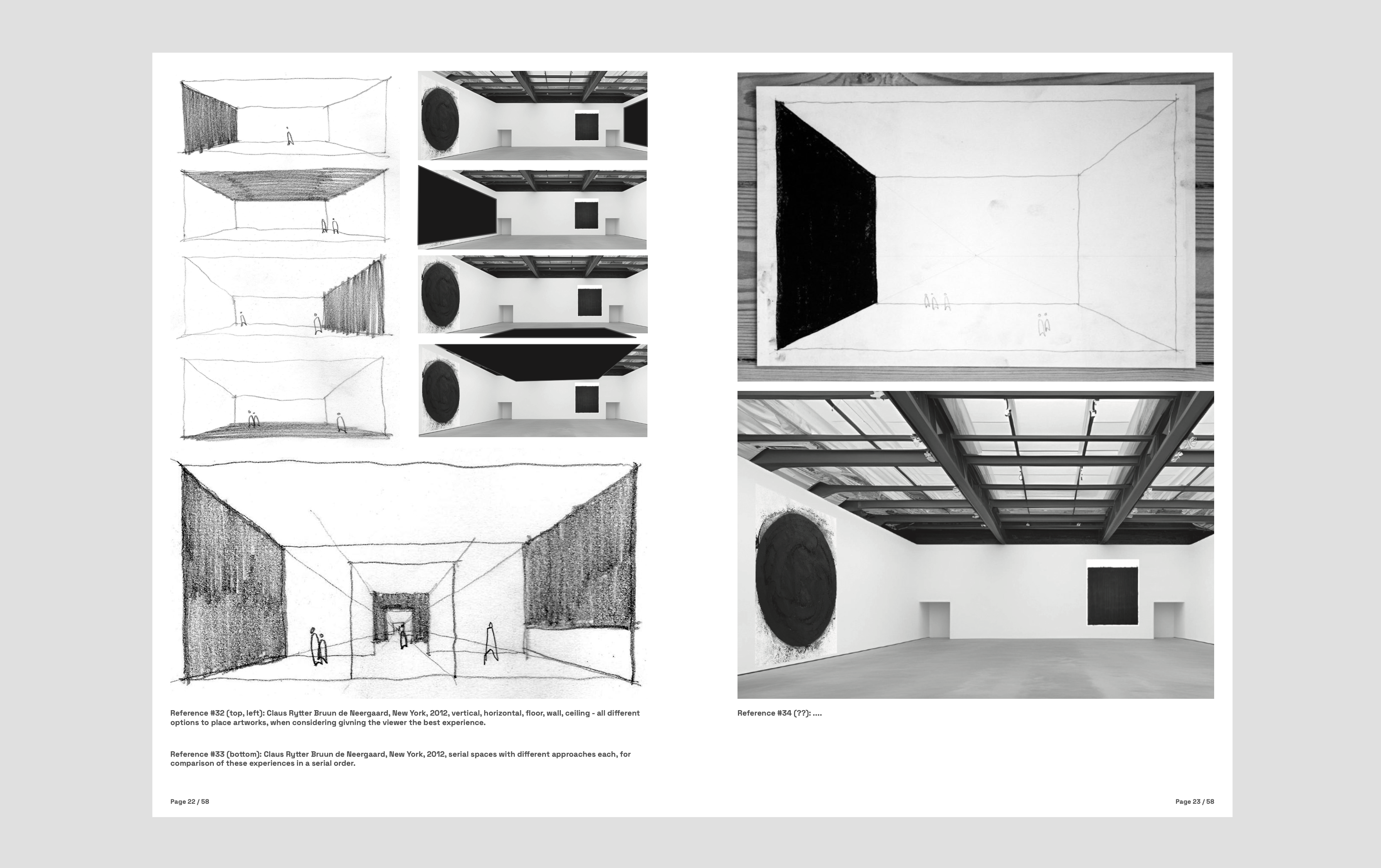
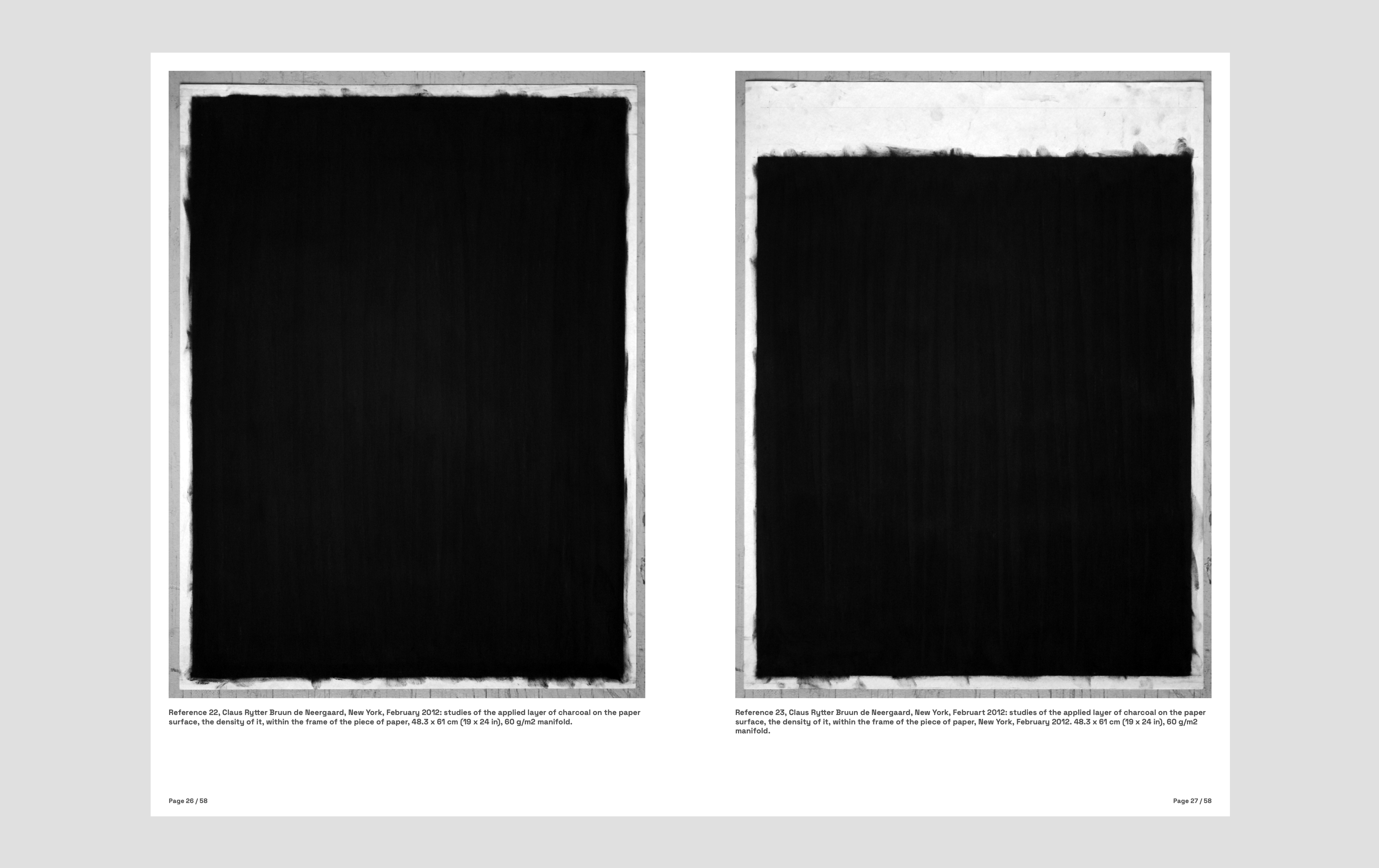

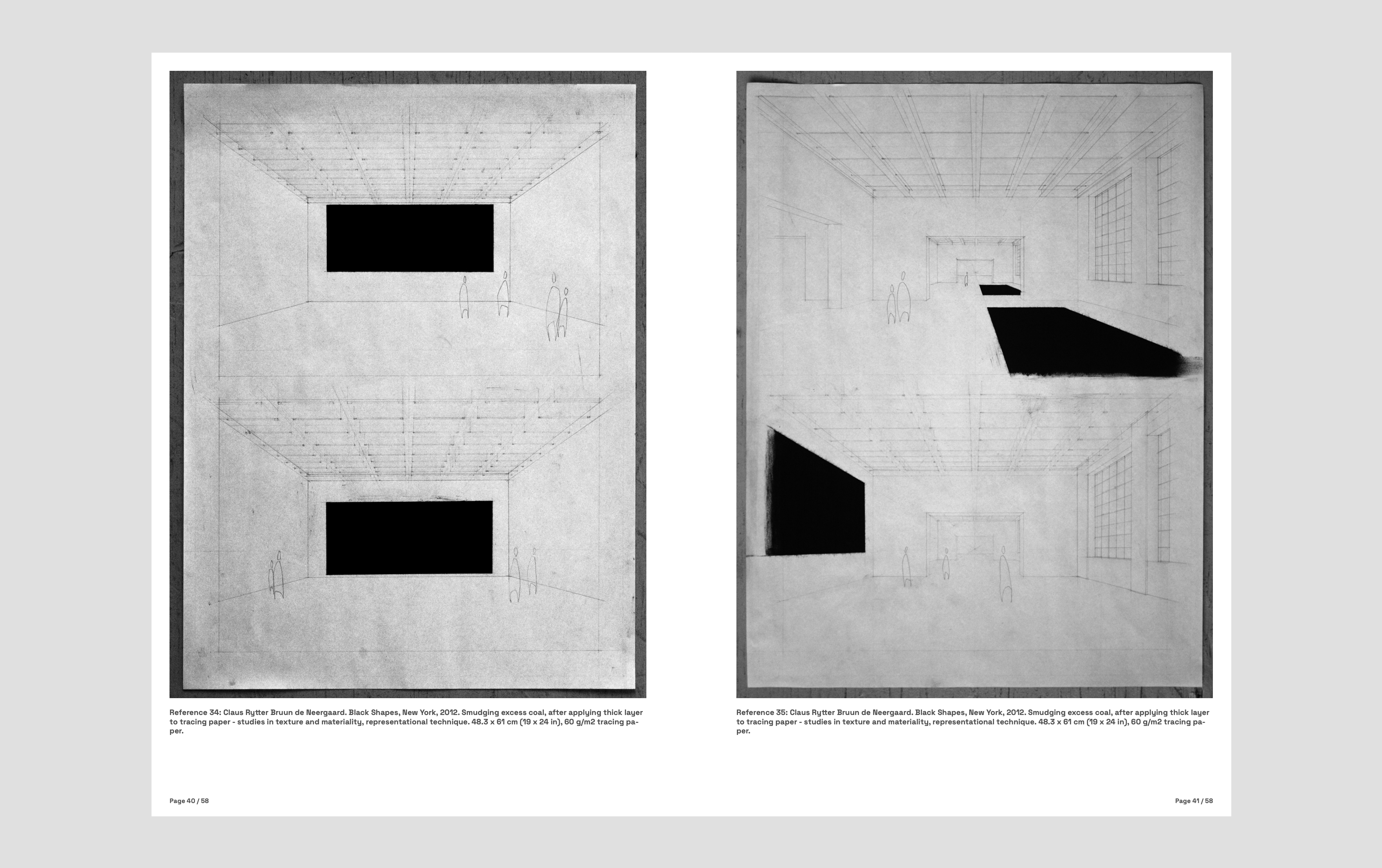
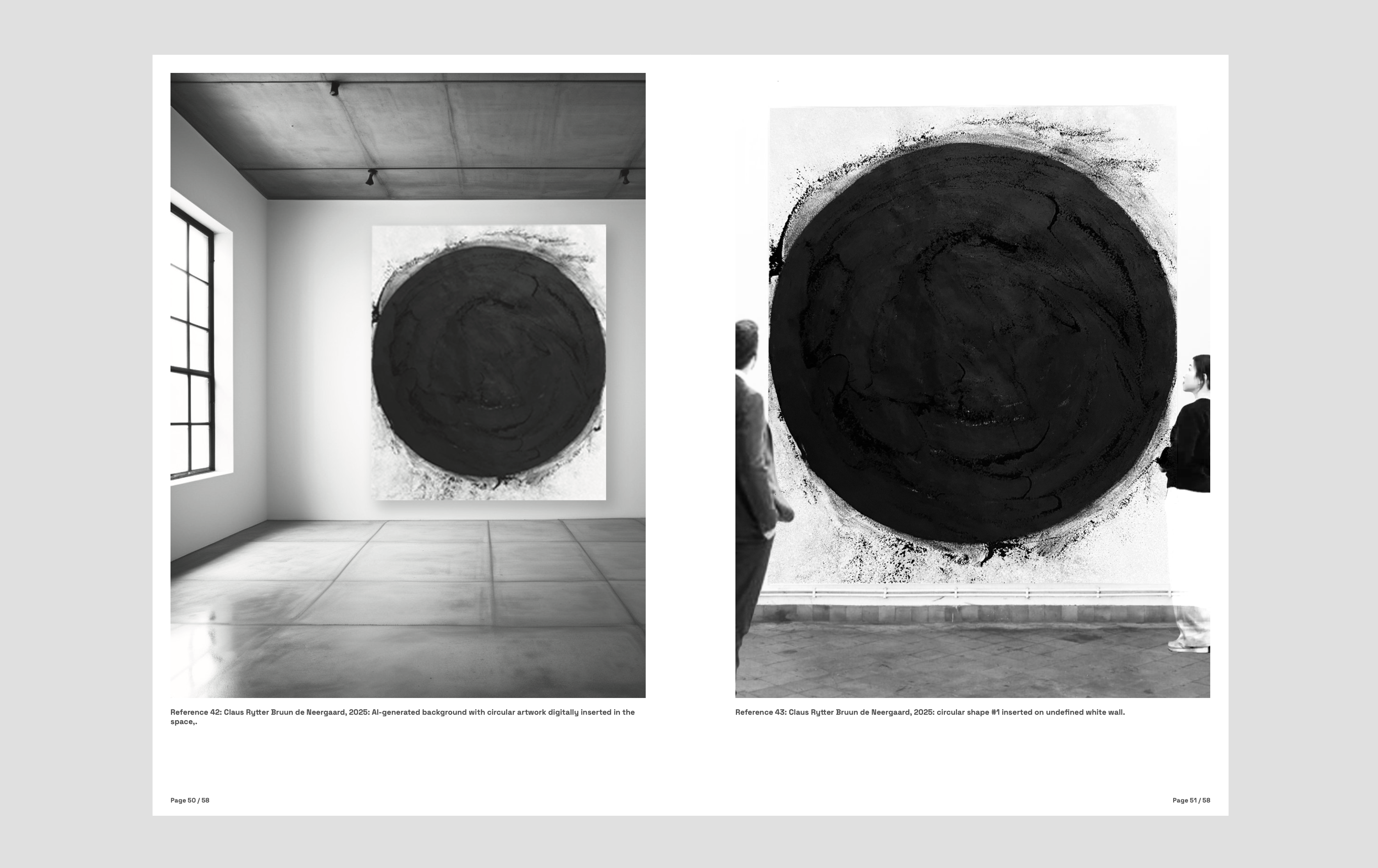
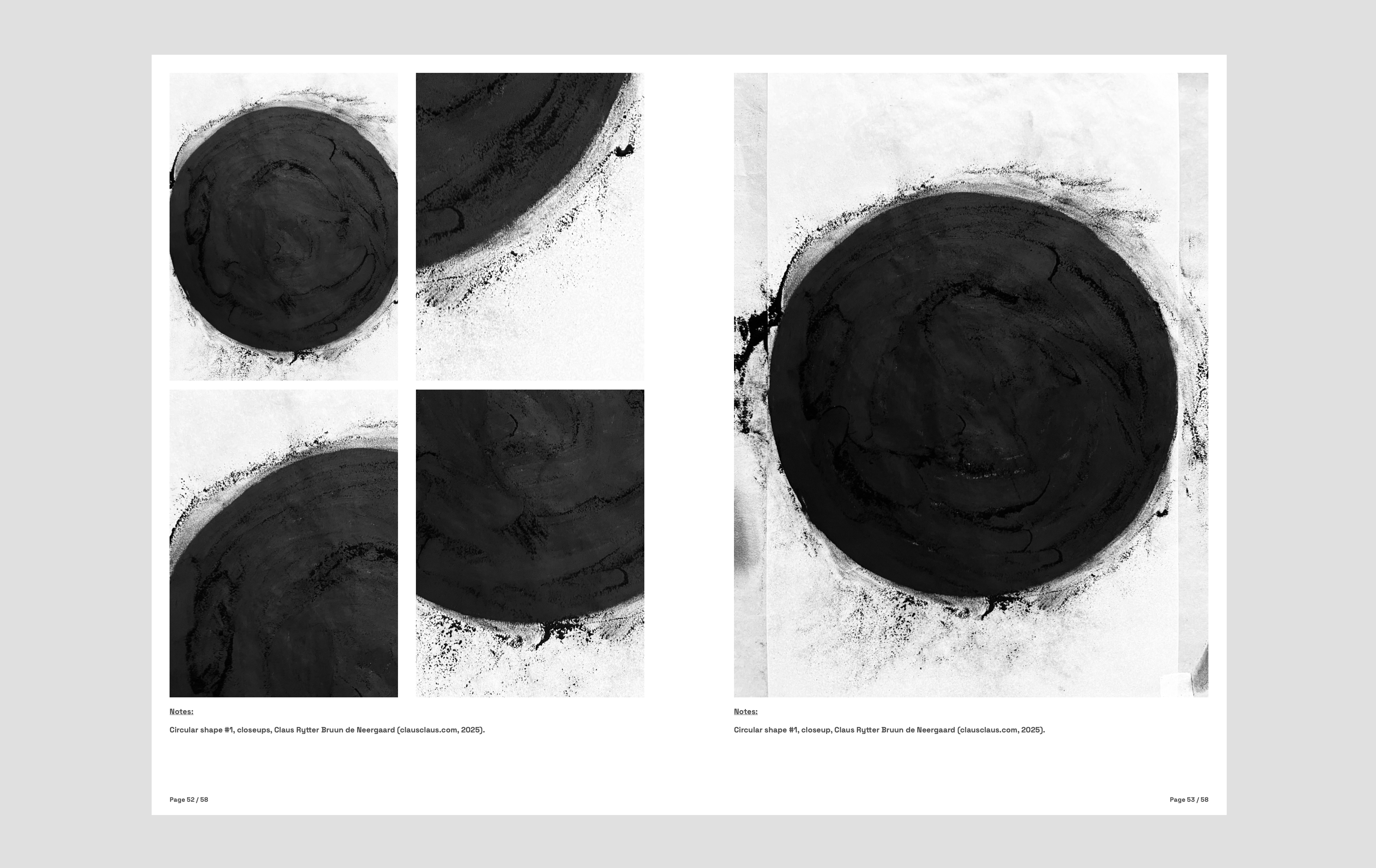
The black manifests a very dense and heavy sensation, when viewed in the proper settings, and at the right scale, and in relation to the space that finds itself in.
An activation of the senses, and hopefully a mass in the void that reaches beyond the paper on the wall and tells us a story that wasn’t there before.